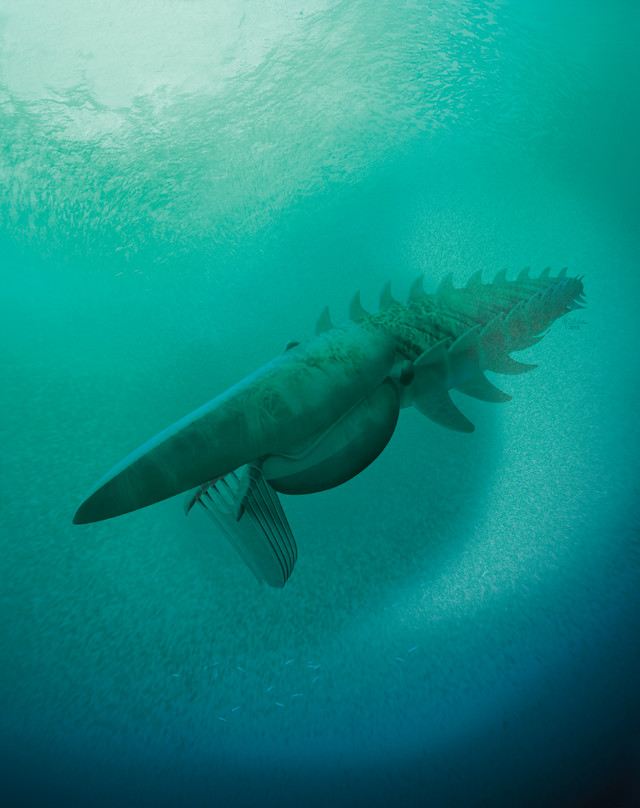
by Mary Caperton Morton Thursday, July 16, 2015

This reconstruction of the giant filter- feeding anomalocaridid, Aegirocassis benmoulae, from the Early Ordovician of Morocco shows it feeding on a cloud of plankton. Credit: Marianne Collins, ArtofFact.
Early in the Paleozoic, giant arthropods known as anomalocaridids were the largest predators in the sea. A collection of finely preserved fossils, described in a new study in Nature and belonging to the Early Ordovician Fezouata Biota of Morocco, is now giving paleontologists a more detailed look at a 2-meter-long variety called Aegirocassis benmoulae. The fossils seem to suggest that at least this species wasn’t a predator after all.
Anomalocaridids are best known from their preserved heads, which have provided crucial insights into the early evolution of arthropods, a group that now includes spiders, scorpions and shrimp. Unique in the world of known anomalocaridids and among the youngest ever found, the Fezouata specimens have appendages on their heads adapted for filter, rather than predatory, feeding. In addition to the head, the new study focuses on the trunk of A. benmoulae, a feature that has not been found as well preserved in other specimens. The fossils have trunk segments with separate dorsal and ventral flaps, which bear respective resemblances to the gill flaps and walking limbs seen on the trunks of modern arthropods.
The “unprecedented body length” of more than 2 meters indicates a new direction in the feeding ecology of the clade, wrote lead author Peter Van Roy of Yale University and colleagues. And “the evolution of giant filter-feeding anomalocaridids may reflect the establishment of highly developed planktic ecosystems during the Great Ordovician Biodiversification Event,” in which new groups emerged after many existing fauna died out at the end of the Cambrian.
© 2008-2021. All rights reserved. Any copying, redistribution or retransmission of any of the contents of this service without the expressed written permission of the American Geosciences Institute is expressly prohibited. Click here for all copyright requests.